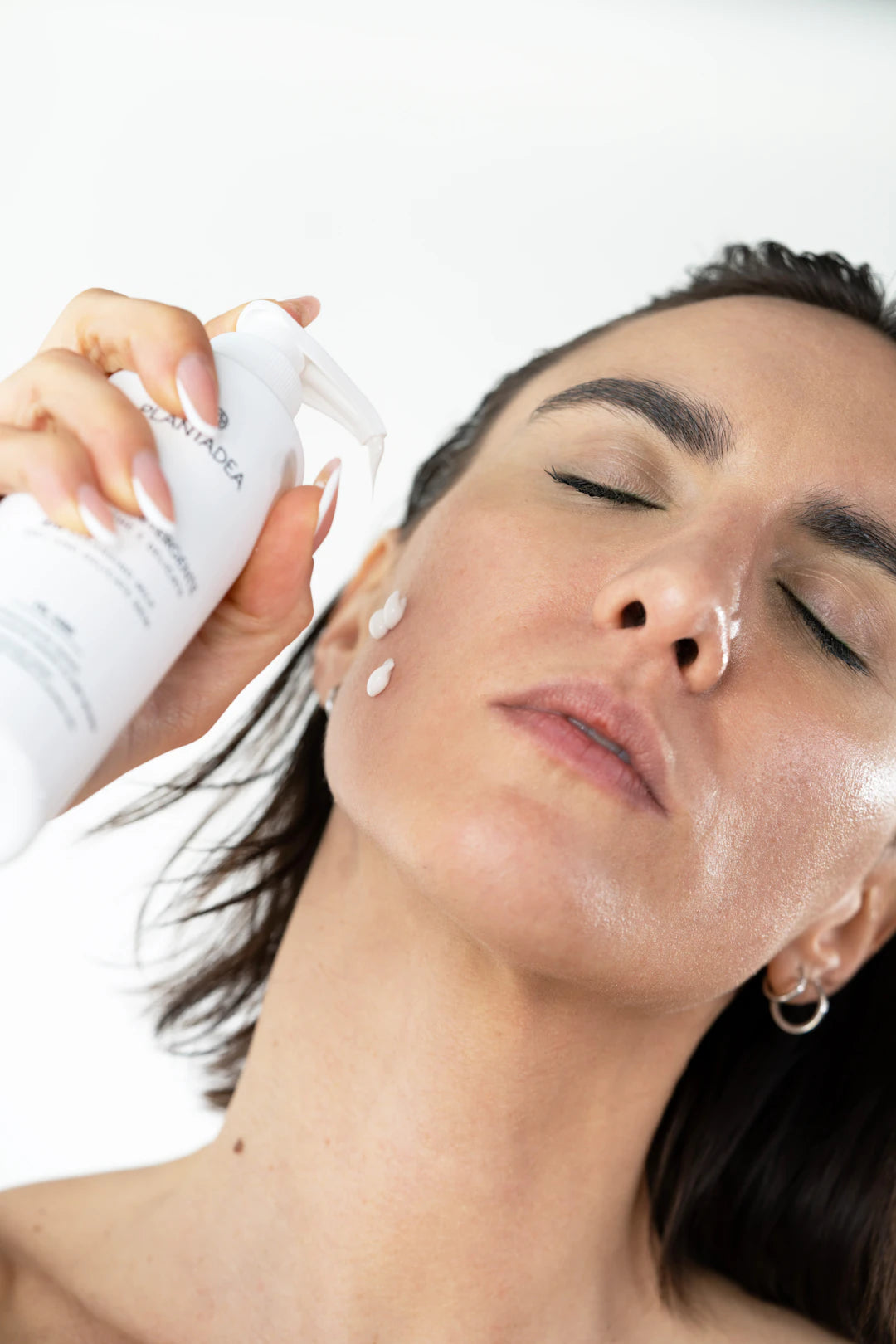Exfoliation 101: How Often Should You Exfoliate Your Skin?

Overview
Exfoliation is the process of removing dead skin cells, enhancing skin health and product absorption. Regular exfoliation benefits include improved texture, reduced breakouts, and anti-aging effects. The frequency varies by skin type: normal skin (1-2 times a week), oily skin (2-3 times), dry skin (once a week), and sensitive skin (every 1-2 weeks). Understanding the types—physical and chemical—is crucial, and it's important to adjust your routine based on skin response and seasonal changes to avoid over-exfoliation, which can cause irritation and breakouts.
Frequently Asked Questions
1. What is exfoliation?
2. How often should I exfoliate?
3. What are the benefits of regular exfoliation?
4. What are the types of exfoliation?
5. What are the risks of over-exfoliation?
When it comes to maintaining a healthy and radiant complexion, exfoliation plays a critical role. But with the plethora of skincare advice available today, many people wonder: how often should you exfoliate? In this detailed guide, we will delve into the ins and outs of exfoliation, highlighting the benefits, techniques, and insights into various skin types. You'll walk away with all the knowledge you need to choose the right exfoliation frequency for your unique skin.
What is Exfoliation?
Exfoliation is the process of removing dead skin cells from the surface of your skin. This practice not only helps to reveal fresh, new skin but also enhances the effectiveness of your skincare routine. By getting rid of dead skin cells, your serums and moisturizers can penetrate more effectively, promoting healthier skin.
The Benefits of Regular Exfoliation
There are numerous benefits associated with regular exfoliation. Here are some significant reasons to incorporate this practice into your skincare routine:
- Promotes Cell Turnover: Regular exfoliation encourages the natural turnover of skin cells, which can slow down with age.
- Prevents Clogging of Pores: By removing dead skin cells, exfoliation helps to prevent clogged pores, which can lead to acne and breakouts.
- Enhances Product Absorption: With a clean surface, your skincare products can penetrate deeper and work more effectively.
- Improves Skin Texture: Exfoliating regularly can result in smoother, brighter skin and a more even tone.
- Supports Antiaging: By stimulating collagen production and revealing newer skin, exfoliation can have an antiaging effect, reducing the appearance of fine lines and wrinkles.
Types of Exfoliation
Understanding the different methods of exfoliation is essential in determining how often you should exfoliate. Generally, there are two main types: physical and chemical exfoliation.
Physical Exfoliation
Physical exfoliation involves using a scrub or instrument to mechanically remove dead skin cells. Microdermabrasion is a popular technique that falls under this category. This method uses tiny crystals to exfoliate the skin surface, providing immediate results and a youthful glow.
Chemical Exfoliation
Chemical exfoliation employs acids or enzymes to break down the bonds between dead skin cells, allowing them to be sloughed away. Common ingredients found in chemical exfoliants include alpha hydroxy acids (AHAs) and beta hydroxy acids (BHAs). Unlike physical exfoliation, chemical exfoliation often penetrates deeper, offering more long-lasting results.
How Often Should You Exfoliate?
The frequency of exfoliation depends on several factors, including your skin type, the method of exfoliation, and any skin concerns you may have. Here's a breakdown of recommendations based on skin type:
Normal Skin
If you have normal skin, you can typically exfoliate 1-2 times per week using either a physical or chemical exfoliant. This will help maintain a fresh and healthy appearance without causing irritation.
Oily and Acne-Prone Skin
For those with oily or acne-prone skin, exfoliating 2-3 times per week can be beneficial. Using a BHA-based chemical exfoliant can clear out pores and reduce breakouts, while moderate physical exfoliation can help keep skin smooth.
Dry Skin
If your skin is on the drier side, exfoliating once a week is often sufficient. Over-exfoliating can strip your skin of natural oils, leading to increased dryness and irritation. Opt for gentler exfoliants with hydrating properties.
Sensitive Skin
Individuals with sensitive skin should approach exfoliation with caution. It’s best to exfoliate only once every 1-2 weeks using very gentle methods. Look for products with a lower concentration of acids and avoid harsh scrubs.
Listening to Your Skin
While these guidelines provide a solid starting point, it's crucial to listen to your skin's needs. Factors such as season, climate, and your overall skincare routine can influence how your skin reacts to exfoliation. It's vital to monitor your skin for signs of irritation, sensitivity, or excessive dryness, which may indicate that you're exfoliating too frequently.
The Role of Seasonality in Exfoliation
Changing seasons can also affect your skin’s exfoliation needs. For instance, during the dry winter months, your skin may require less frequent exfoliation due to increased sensitivity. Conversely, in the summer, sweat and oil production may warrant more frequent exfoliation to keep pores clear.
Adjusting Your Routine
It’s essential to adjust your exfoliation routine according to your skin condition and external elements. Here are some tips on how to modify your regimen:
- Patch Testing: Always perform a patch test when trying a new exfoliant to determine how your skin reacts.
- Consulting Professionals: When in doubt, consider consulting a dermatologist who can help create a personalized routine.
- Monitoring Changes: Pay attention to how your skin feels after exfoliation and adjust accordingly.
Potential Risks of Over-Exfoliation
While exfoliating is beneficial, it’s essential to avoid over-exfoliation, which can lead to adverse effects. Overdoing it can strip essential moisture, disrupt your skin's barrier, and increase sensitivity. Here’s what to watch out for:
- Redness and Irritation: Signs of irritation mean you may need to reduce the frequency of exfoliation.
- Flakiness or Peeling: Dry patches and peeling skin indicate that your skin is overwhelmed.
- Increased Breakouts: Sometimes, over-exfoliation can backfire and lead to breakouts.
Final Thoughts on Your Exfoliation Journey
Finding the right exfoliation frequency for your skin type is essential for achieving and maintaining a healthy, glowing complexion. Whether you choose physical methods like microdermabrasion or chemical options, it's crucial to adjust your routine based on your skin's unique needs. Remember, your skin is a reflection of your overall health, so treat it with care.
Incorporate exfoliation into your skincare regimen thoughtfully, and you’ll not only uncover smoother skin but also enhance the effectiveness of your other skincare products, making your daily routine more rewarding. The journey towards a more radiant complexion is just a few exfoliations away!
Linked Product

Microdermabrasion
Microdermabrasion offers a gentle yet effective way to exfoliate the skin, utilizing bamboo beads to remove dead skin cells without causing irritation. Its formulation includes pumpkin extract and vitamins, which help to soothe and repair the skin while promoting a smoother complexion. This product can be a beneficial addition to your skincare routine, especially when paired with beauty oils or laser resurfacing treatments.
View Product

